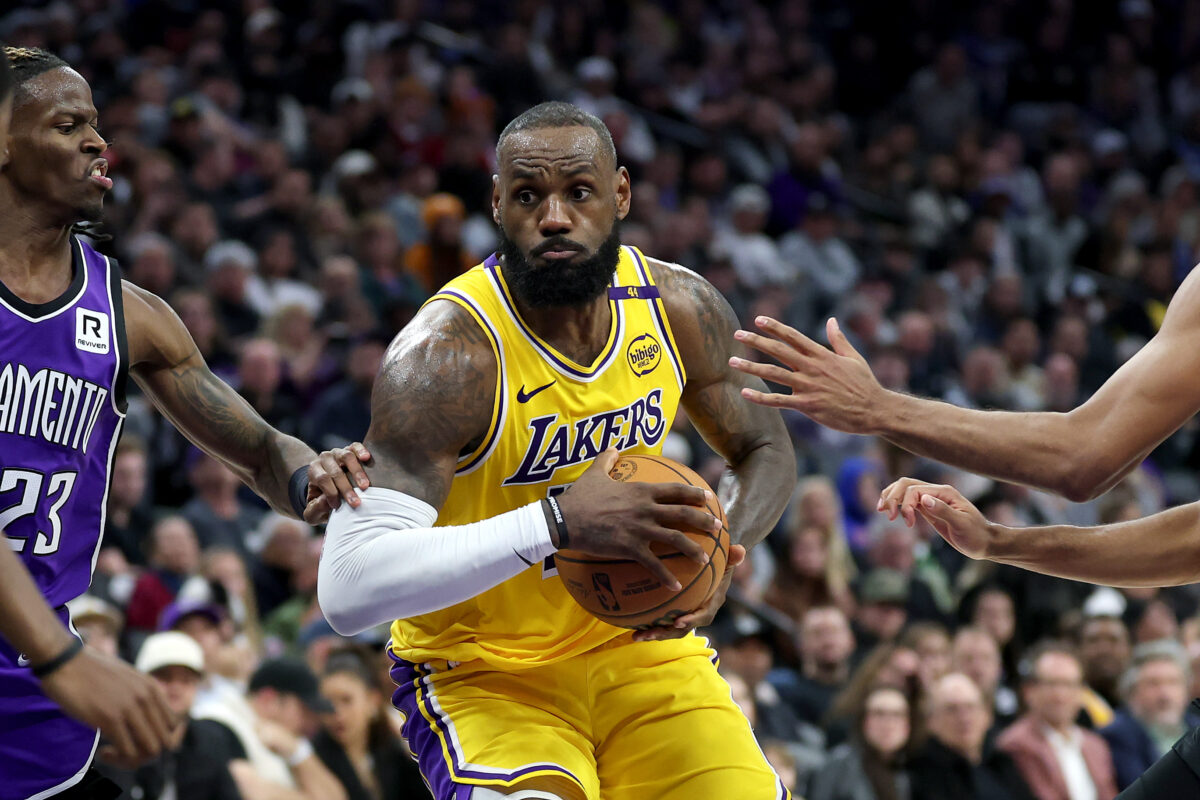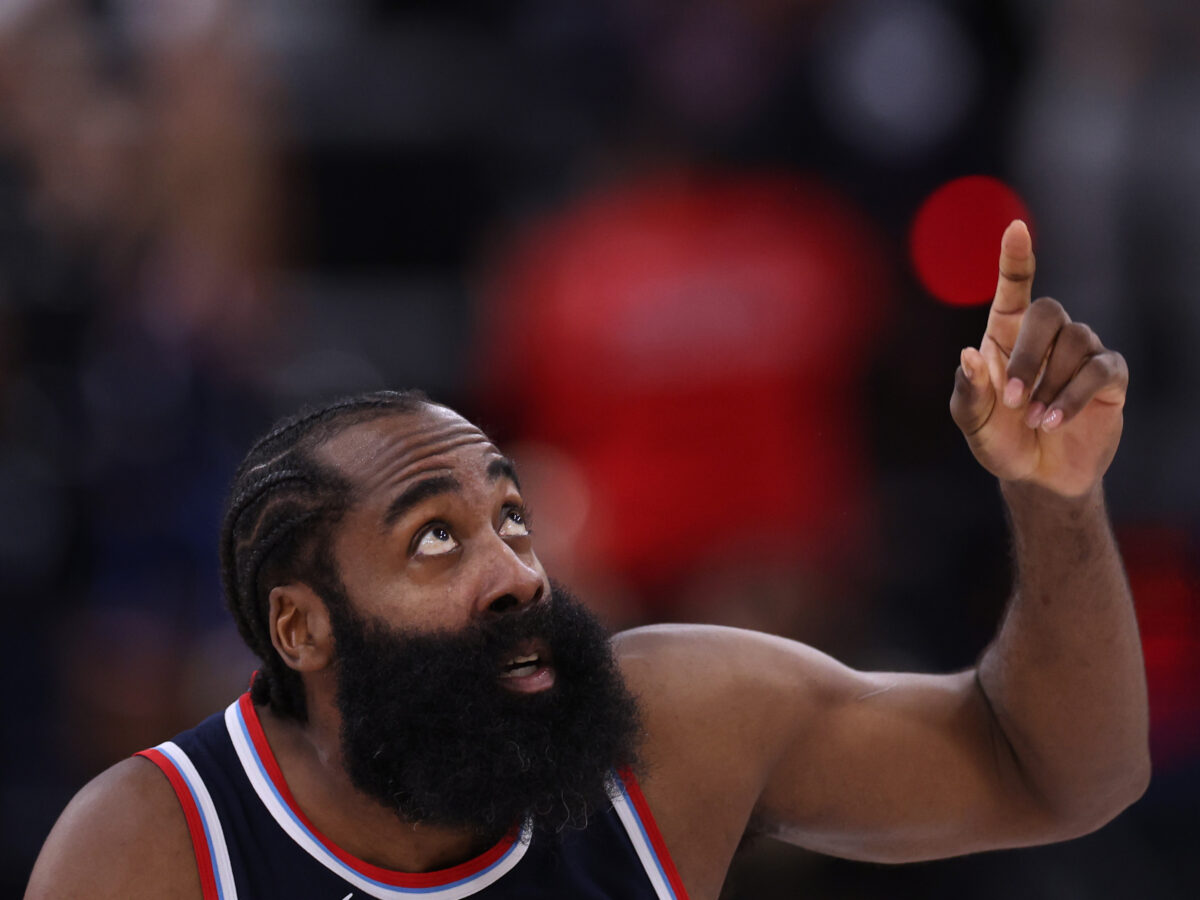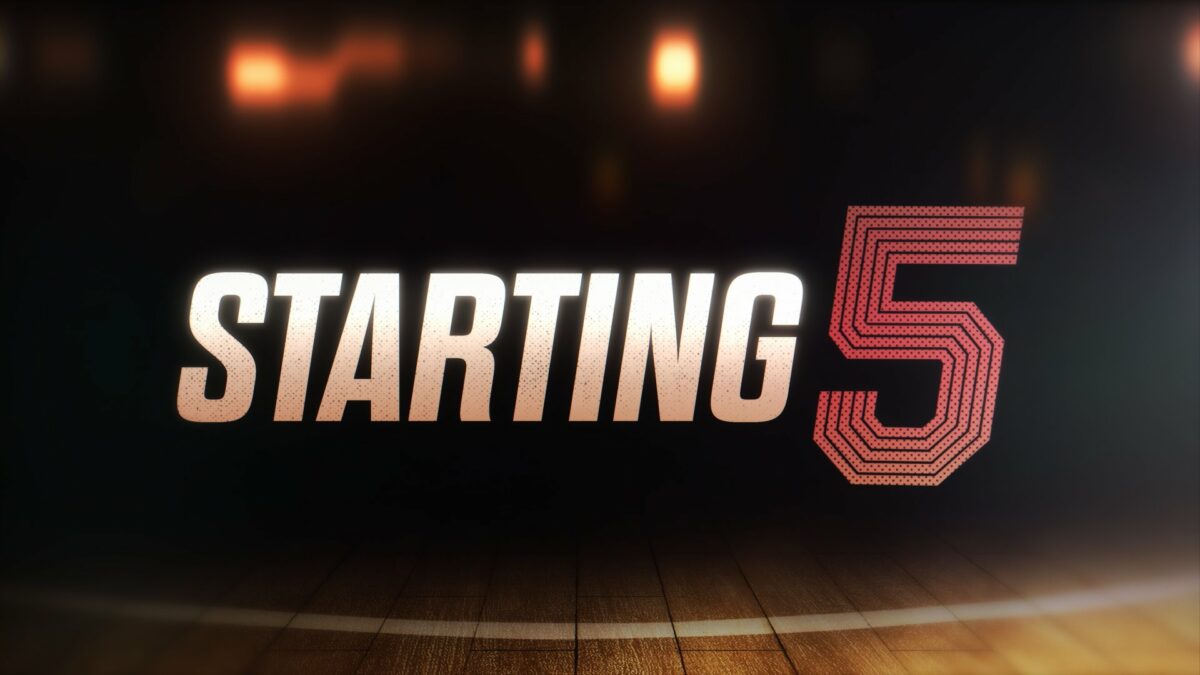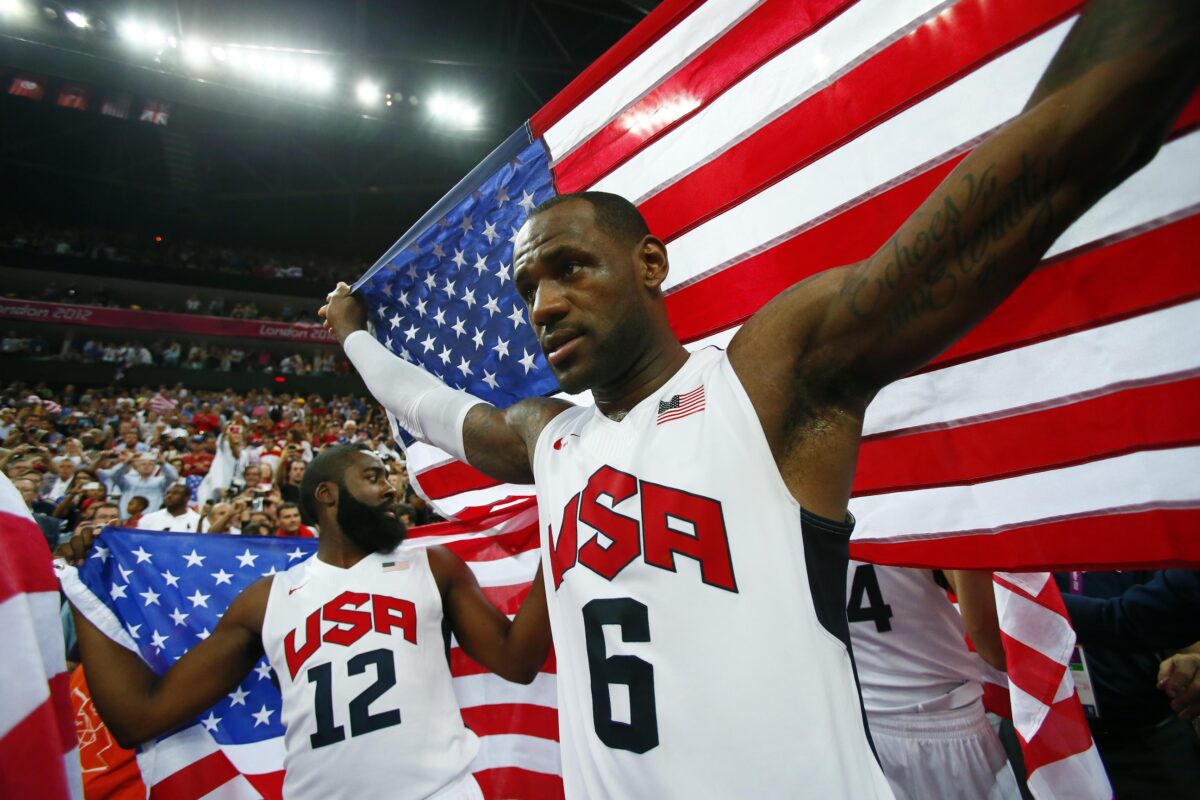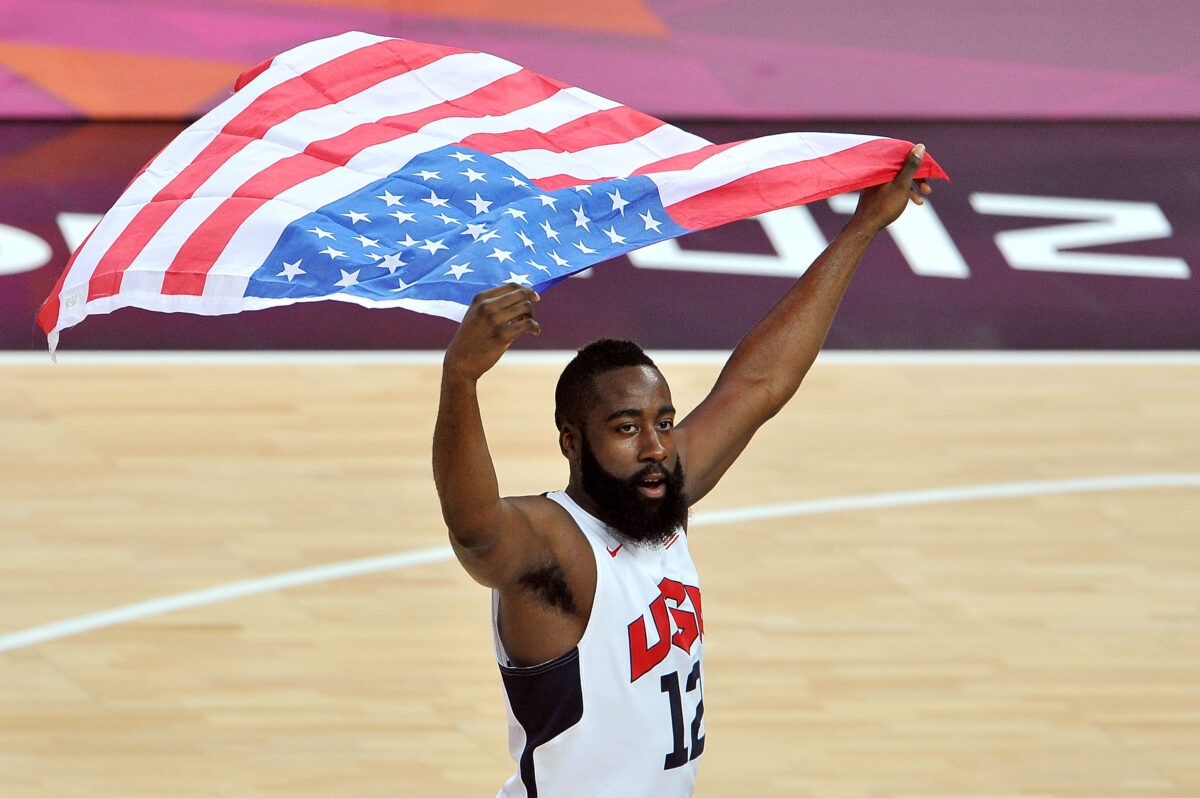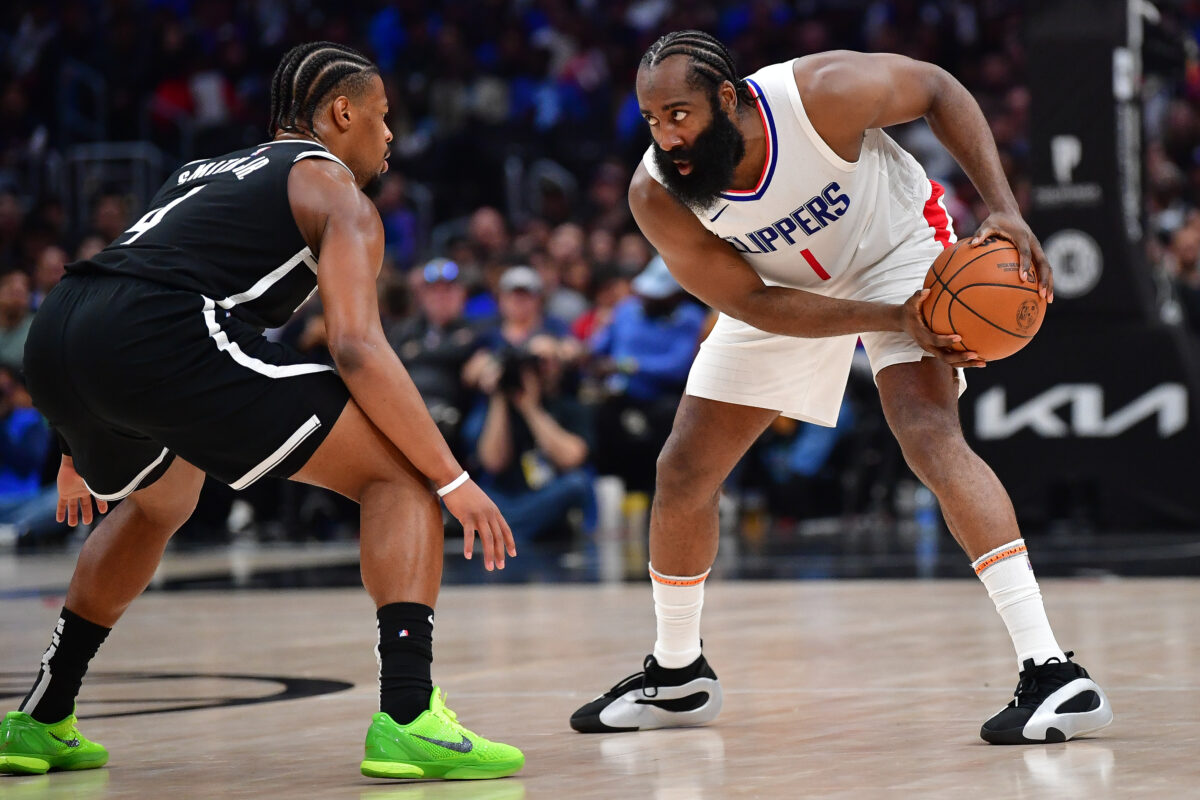How can the Lakers improve next season with these restrictions?
As expected, the Lakers re-signed LeBron James to a new contract in free agency.
It was one of three biggest moves they have made so far this offseason, including hiring the co-host of his podcast as head coach and drafting his son then offering him a multiyear guaranteed contract. Otherwise, as of when this story was published, fans can expect to look mostly similar to last year.
James will return on a two-year, $104 million contract worth the maximum he could sign. His deal includes a player option in the second season (which means this song and dance can continue next summer) and a no-trade clause.
James signed a max contract after his agent, Rich Paul, said that he would be willing to accept a pay cut if the Lakers could secure certain players around the league during free agency:
“The type of player that James would be willing to make a financial sacrifice for would be an established veteran playmaker such as James Harden or Klay Thompson, or an established big man to play alongside Anthony Davis such as Jonas Valančiūnas, sources told ESPN.”
Harden re-signed with the Clippers, Thompson was included in a sign-and-trade with the Mavericks, and Valančiūnas joined the Wizards. That left the best remaining free agents cupboard fairly empty, so James signed a deal for as much money as he could, which he earned the right to do.
According to ESPN, Paul and Rob Pelinka are “planning to discuss” the possibility of James potentially taking “$1 million or so” below the max. Until that happens, though, it looks like trouble for Los Angeles.
Now that D’Angelo Russell accepted his player option to return to Los Angeles, the Lakers are currently in the punitive second apron of the luxury tax.
Due to the restrictions of the first apron, the front office would have a very unrealistic challenge to clear at least $25 million in salary to access the $12.8 million non-tax mid-level exception.
But they have even more harsh restrictions in the second apron, such as an inability to acquire a player (including a potentially appealing free agent like DeMar DeRozan) in a sign-and-trade.
Unless they significantly reduce payroll, they are also restricted from using the $5.2 million taxpayer mid-level exception.
As of right now, without salary dumping players in a trade, the Lakers can essentially only sign minimum players or re-sign their own players from last season (such as Taurean Prince) if they want to add to their roster.
Perhaps this team improves with new coaching and gets solid contributions from rookie Dalton Knecht or a healthy Gabe Vincent. Otherwise, however, there is little reason to expect this team to look any better than they did as a play-in team in 2023-24.
There is no one to blame but themselves for the situation getting this dire.
[lawrence-auto-related count=5 category=1373 tag=142718]

